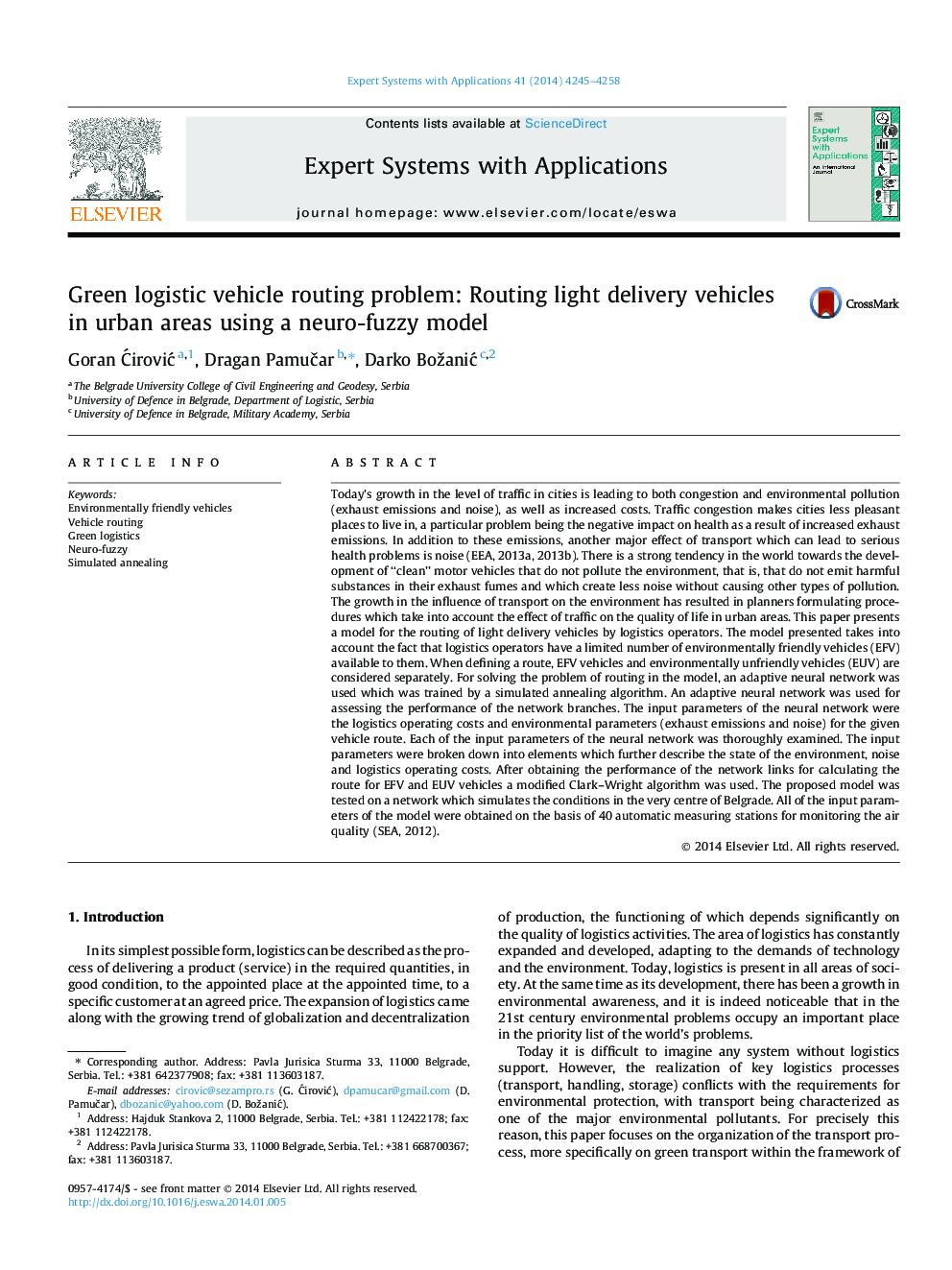| کد مقاله | کد نشریه | سال انتشار | مقاله انگلیسی | نسخه تمام متن |
|---|---|---|---|---|
| 386585 | 660886 | 2014 | 14 صفحه PDF | دانلود رایگان |
• Proposes a model for routing light delivery vehicles in urban areas.
• The model takes into account logistic operator costs, noise and the environment state.
• As the method used is a neuro-fuzzy logic, simulated annealing and modified Clark–Wright algorithm for network design.
• The model was tested on a real network of Belgrade sity.
Today’s growth in the level of traffic in cities is leading to both congestion and environmental pollution (exhaust emissions and noise), as well as increased costs. Traffic congestion makes cities less pleasant places to live in, a particular problem being the negative impact on health as a result of increased exhaust emissions. In addition to these emissions, another major effect of transport which can lead to serious health problems is noise (EEA, 2013a, 2013b). There is a strong tendency in the world towards the development of “clean” motor vehicles that do not pollute the environment, that is, that do not emit harmful substances in their exhaust fumes and which create less noise without causing other types of pollution. The growth in the influence of transport on the environment has resulted in planners formulating procedures which take into account the effect of traffic on the quality of life in urban areas. This paper presents a model for the routing of light delivery vehicles by logistics operators. The model presented takes into account the fact that logistics operators have a limited number of environmentally friendly vehicles (EFV) available to them. When defining a route, EFV vehicles and environmentally unfriendly vehicles (EUV) are considered separately. For solving the problem of routing in the model, an adaptive neural network was used which was trained by a simulated annealing algorithm. An adaptive neural network was used for assessing the performance of the network branches. The input parameters of the neural network were the logistics operating costs and environmental parameters (exhaust emissions and noise) for the given vehicle route. Each of the input parameters of the neural network was thoroughly examined. The input parameters were broken down into elements which further describe the state of the environment, noise and logistics operating costs. After obtaining the performance of the network links for calculating the route for EFV and EUV vehicles a modified Clark–Wright algorithm was used. The proposed model was tested on a network which simulates the conditions in the very centre of Belgrade. All of the input parameters of the model were obtained on the basis of 40 automatic measuring stations for monitoring the air quality (SEA, 2012).
Journal: Expert Systems with Applications - Volume 41, Issue 9, July 2014, Pages 4245–4258
